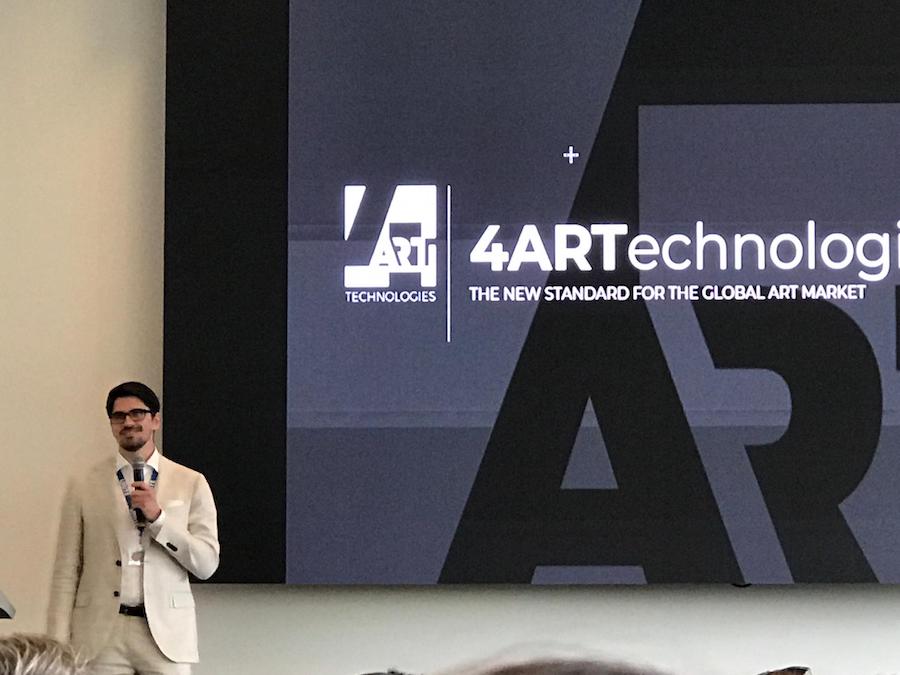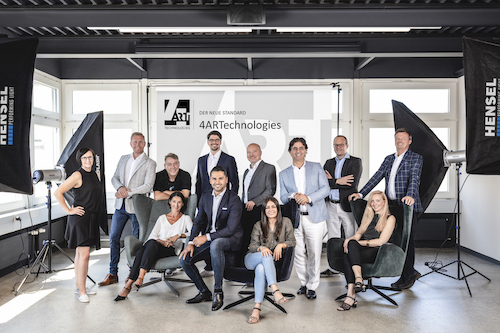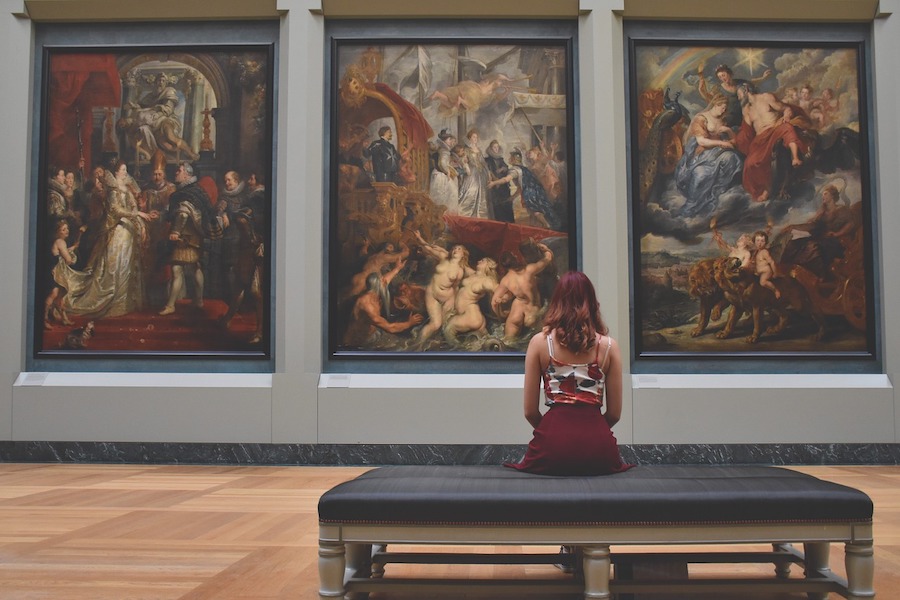According to a UBS Art Basel report, 40 million artworks changed hands globally in 2018 – a trading volume worth around €63 billion. It’s an impressive figure, especially when considering that, according to experts, up to 50% of all artworks worldwide are forgeries.
4ARTechnologies presented its digital solution to this multi-million euro problem at the recent Vroom Summit and the Deloitte Art and Finance conference, both held in Monaco recently. Director Dino Lewkowicz spoke to Monaco Life about his company’s unique and patented “Augmented-Authentication-Technology” which is set to revolutionise the art market.

Monaco Life: Can you explain for us what 4ARTechnologies is, because it appears to be quite a ground-breaking concept…
Dino Lewkowicz: It is very ground-breaking because it finally solves issues and challenges that have existed in the art market for decades. We provide a service that combines key technologies, one being our own patented “Augmented-Authentication-Technology” which allows anyone to use a smartphone to create a unique digital fingerprint of any art piece. This means you can always make sure you have the original and not a copy that looks just like it. We also use the blockchain to secure information across generations in a way that cannot be manipulated and really solves strategic and infrastructure problems that exist in the art market on a global scale.
What are the problems that exist in the art market?
One of the key issues is forgeries. Surprisingly, while we are close to the year 2020, statistics say half of all artworks in the world are forgeries – an incredible number and quite unbelievable in today’s world. So, we really need to solve that challenge.
The other problem is that the art world is notorious for being hard to get into and difficult to understand – you need many years in the field. It is an industry that is very tightly connected so you need a lot of trust and reputation. We want to democratise the market and digitise processes – make them easier, faster and more cost-efficient. We want to make it easier for people to get into the market, to buy art, to make sure they have an original and that their investment/passion is being handled correctly. Essentially, they are the challenges we are trying to solve.
So, you envisage this technology being used by everyone in the art world, not just major players?
Very much so, our aim is to be a friend of all stakeholders in the art market. It is a trend of start-ups to disrupt and change the foundation of all markets, but we are providing a service that makes the work of all people in the art markets – artists, curators, gallerists, restorers and the like – easier, faster and more cost-efficient by modernising the process. We have had a lot of success so far, and we are gaining more interest every day.
Tell us about the technology…
Using a standard smartphone camera, several detailed photographs are made of the artwork to capture its structural and material properties and to read its DNA. This data is converted into a digital fingerprint and secured with the blockchain, together with other relevant data on the artwork’s provenance, such as origin and previous owners, as well as information on restorations and transports in a tamper-proof manner.
This provides each artwork with a biometric passport which accompanies the painting throughout its entire life cycle. All stations are stored without gaps, every damage is registered, all restorations are documented, and every change of ownership is recorded, all secured for eternity. Once a painting has been scanned, its digital fingerprint can be compared to any other artwork that claims to be the same.
It sounds obvious, so why hasn’t it been done up until now?
Sadly, there is inherent resistance to change within the art market. There are a few entities, especially big institutions, that hold a lot of power and have a lot of money, while on the other hand there are a lot of people who are in the art market who are not doing as well, who don’t have a voice and can’t create any sort of change. There has been a resistance to change, especially when it comes to offering data, because they ask: “where do you store the data?” People are very secretive when it comes to that, so it’s taken some time to find a modern technology that makes sure privacy is respected, that the information about the works and ownership are kept safely, and – this is key – that a link is created between the digital world and the physical world, which has been lacking so far. We have had such great success because we provide that link without any additional tools; you can always make sure that the information you have is linked to the physical art piece. And you can be sure that even if you have a series print of a hundred artworks that are exactly identical, you can differentiate each and every one of them and make sure that you have your original and not one that looks just like it.
You are in Monaco for the Vroom Summit, I imagine this is a pertinent destination for you to be in given the demographic?
Yes, we were the only venture from Switzerland invited during the European roadshow to come to the summit here in Monaco, and it’s because we provide quite a unique product that has had a fair bit of success so far. We are also returning for the Deloitte Art and Finance conference, so Monaco is a central place for us. It is obviously important financially, but there is a lot of culture here and a tremendous amount of people who are very interested in art and trading art, so this is one of those key places for us and we are always keen to be in Monaco.


